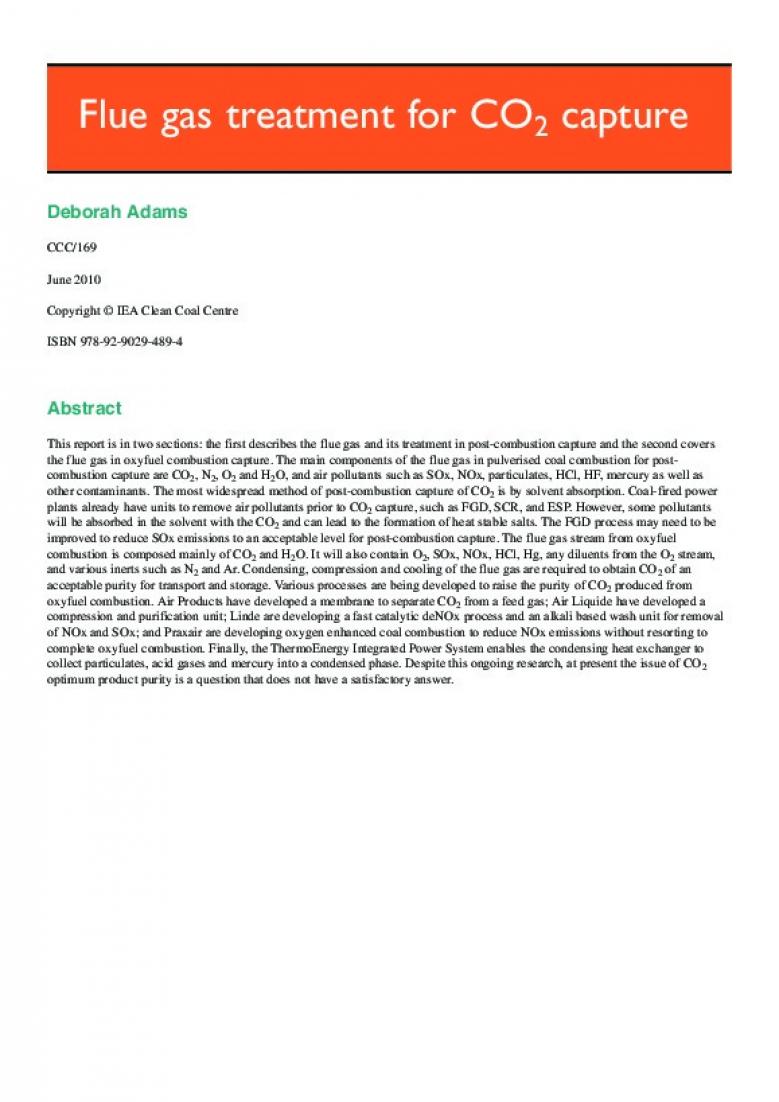CCC/169
June 2010
Copyright © IEA Clean Coal Centre
ISBN 978-92-9029-489-4
Abstract
This report is in two sections: the first describes the flue gas and its treatment in post-combustion capture and the second covers the flue gas in oxyfuel combustion capture. The main components of the flue gas in pulverised coal combustion for postcombustion capture are CO2, N2, O2 and H2O, and air pollutants such as SOx, NOx, particulates, HCl, HF, mercury as well as other contaminants. The most widespread method of post-combustion capture of CO2 is by solvent absorption. Coal-fired power plants already have units to remove air pollutants prior to CO2 capture, such as FGD, SCR, and ESP. However, some pollutants will be absorbed in the solvent with the CO2 and can lead to the formation of heat stable salts. The FGD process may need to be improved to reduce SOx emissions to an acceptable level for post-combustion capture. The flue gas stream from oxyfuel combustion is composed mainly of CO2 and H2O. It will also contain O2, SOx, NOx, HCl, Hg, any diluents from the O2 stream, and various inerts such as N2 and Ar. Condensing, compression and cooling of the flue gas are required to obtain CO2 of an acceptable purity for transport and storage. Various processes are being developed to raise the purity of CO2 produced from oxyfuel combustion. Air Products have developed a membrane to separate CO2 from a feed gas; Air Liquide have developed a compression and purification unit; Linde are developing a fast catalytic deNOx process and an alkali based wash unit for removal of NOx and SOx; and Praxair are developing oxygen enhanced coal combustion to reduce NOx emissions without resorting to complete oxyfuel combustion. Finally, the ThermoEnergy Integrated Power System enables the condensing heat exchanger to collect particulates, acid gases and mercury into a condensed phase. Despite this ongoing research, at present the issue of CO2 optimum product purity is a question that does not have a satisfactory answer.
| Attachment | Size |
|---|---|
| 656.31 KB |


